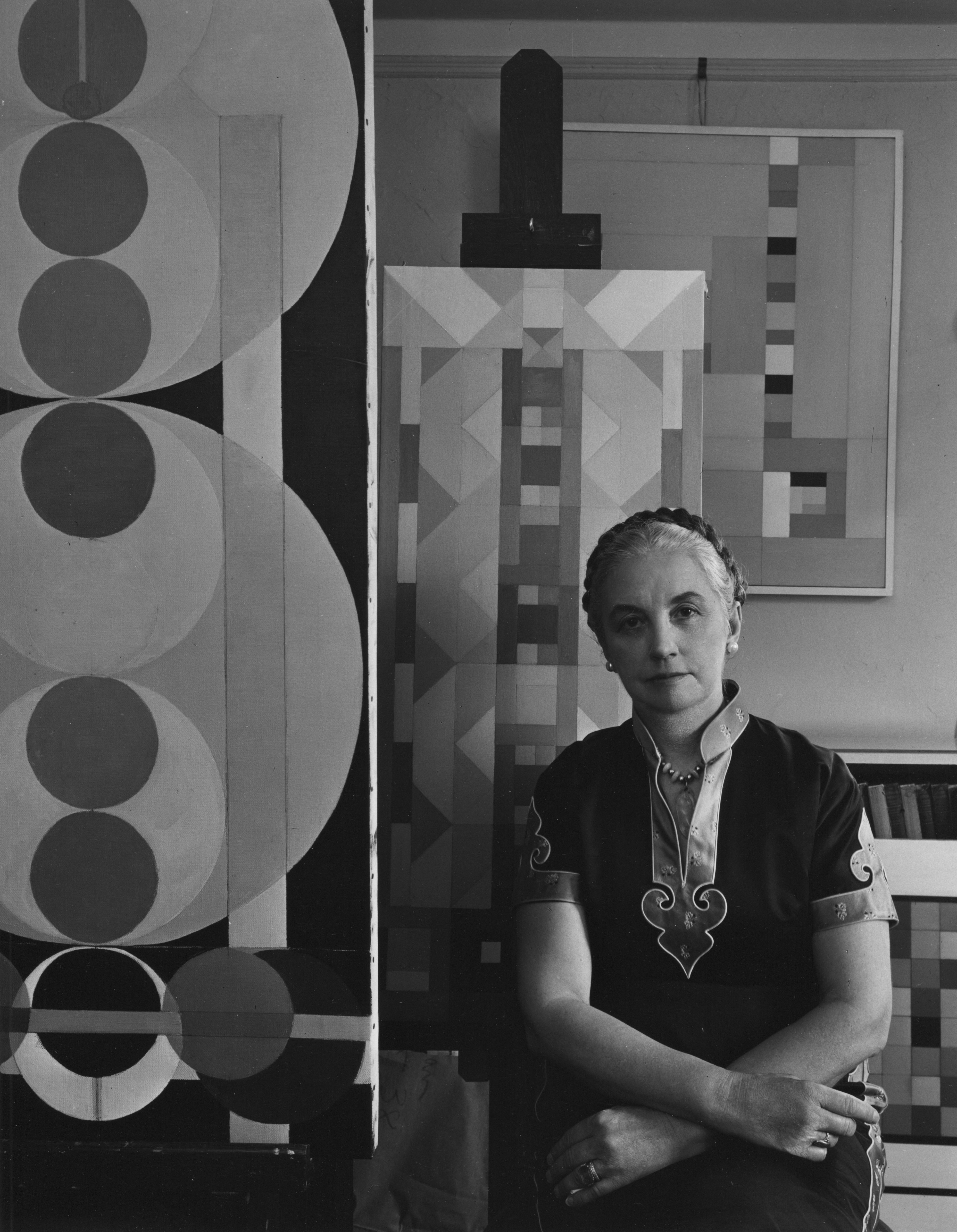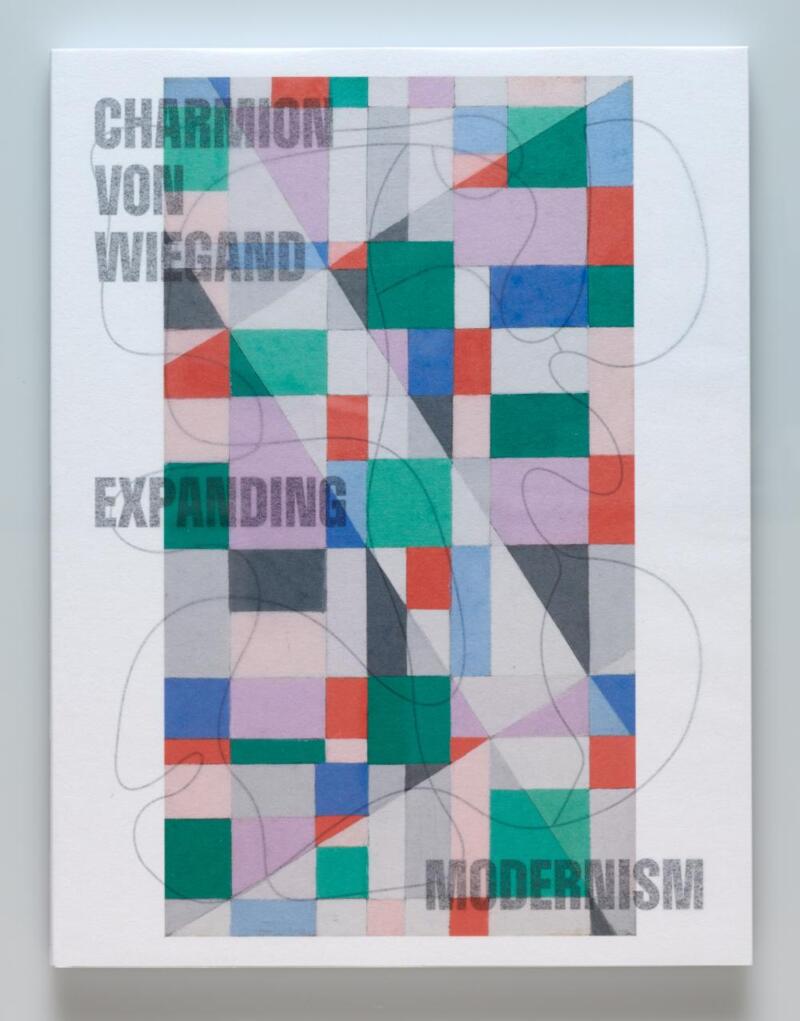Charmion von Wiegand
The 12 August 1941 proved to be a momentous and memorable event in the life of Charmion von Wiegand, born in Chicago, in 1896. Having long-since established her reputation as a journalist and critic, von Wiegand met with Piet Mondrian, then living in exile and residing in his New York studio. The two became friends. Von Wiegand was profoundly interested in Mondrian and in Neo-Plasticism, the stylistic movement pivotal to Mondrian’s artistic practice. Fuelled by this encounter, she embarked on an intensive painting career. Though having already leased a studio in 1925, it had until then served her for research and writing activities.

Charmion von Wiegand, August 16, 1961
Initially, and in contrast to Mondrian’s approach, the works completed from 1941 onwards featured primarily organic forms. Von Wiegand introduced other colours in addition to the primary colours characteristic of Neo-Plasticism. Over time, she gradually evolved her own characteristic conception of abstraction. Following Mondrian’s death in 1944, she gave herself over entirely to the development of her artistic work. By this time, she turned to collage and, furthermore, augmented her work by introducing spiritual and theoretical approaches, notably elements drawn from Buddhism.
The exhibition Charmion von Wiegand focuses on this exceptional, though unjustly ignored, twentieth-century artist who had from the outset cultivated and visualised transcultural open-mindedness and diversity. The present show testifies to her artistic output as well as her pronounced sensitivity towards non-Western cultures or the work of other artists.
The exhibition was created on the initiative of Martin Brauen.
Book and exhibition design: Julia Born, Zurich




